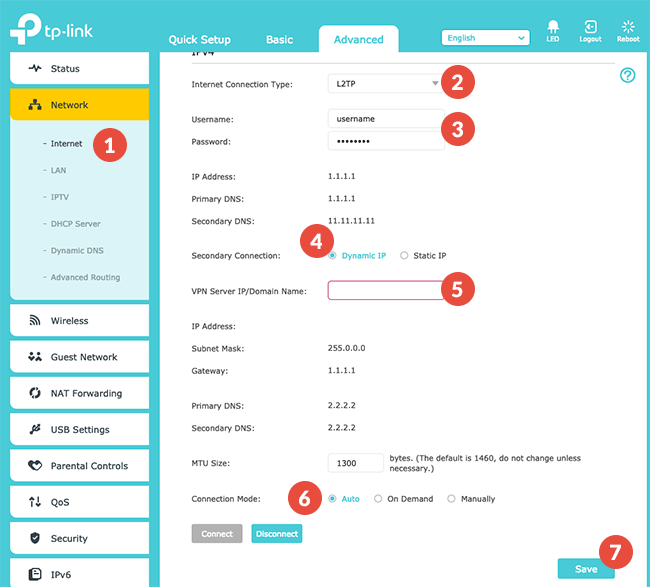
- #SETTING UP TP LINK ROUTER HOW TO#
- #SETTING UP TP LINK ROUTER INSTALL#
- #SETTING UP TP LINK ROUTER PASSWORD#
Often, rainbow tables are used for hacking passwords.
#SETTING UP TP LINK ROUTER PASSWORD#
The password for accessing the router will be changed. For recommendations on setting a strong password, see this article. Enter your username and old password, and then set a new password for accessing the router.On the router settings page, go to System Tools → Password.If you haven’t changed them, you will be able to find them on the underside of your router. On the authorization page, enter your login and password.The IP address of the router is specified on the device and in the user guide. You will be taken to the authorization page for the router’s settings. Enter the router’s IP address in your browser’s address bar.Set a strong password for accessing your router

It is usually attached to the router, but otherwise you can download it from the vendor’s website.Īs an example, we will show the settings from a TP-Link TL-WR841N router. For help navigating your router’s settings, see the user guide for your model. Router interfaces differ depending on the vendor, specific model and firmware version. Change the password to protect your network. A criminal can find out the credentials for accessing your router settings by downloading the user guide from the vendor’s website. Usually, a default login and password are used.
#SETTING UP TP LINK ROUTER HOW TO#
#SETTING UP TP LINK ROUTER INSTALL#
To do so, install Kaspersky VPN Secure Connection on your device and enable a secure connection each time you connect to the Internet. Secure your connection by using a VPN, which adds another level of encryption.


For more information, see this post on the Kaspersky Lab blog. Check that a green or gray padlock icon is displayed in your browser’s address bar. This protection component scans network traffic and protects the computer against network attacks.įirewall is included in the following Kaspersky Lab applications: Kaspersky Internet Security, Kaspersky Anti‑Virus, Kaspersky Total Security, Kaspersky Security Cloud and Kaspersky Small Office Security.


 0 kommentar(er)
0 kommentar(er)
